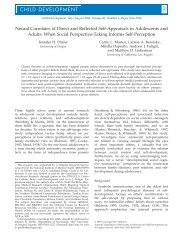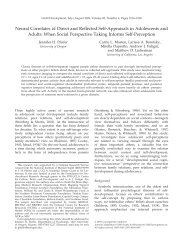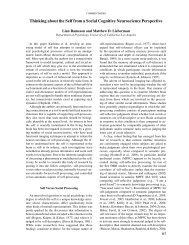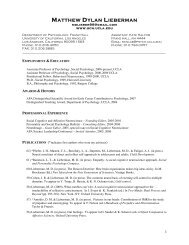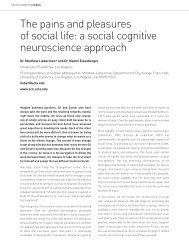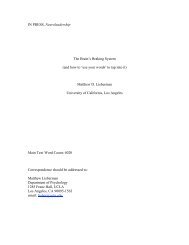In Progress – DO NOT CITE Attributional inference across cultures ...
In Progress – DO NOT CITE Attributional inference across cultures ...
In Progress – DO NOT CITE Attributional inference across cultures ...
Create successful ePaper yourself
Turn your PDF publications into a flip-book with our unique Google optimized e-Paper software.
Culture, Attribution, & Automaticity<br />
42<br />
<strong>In</strong>ferential Goal Constraint <strong>In</strong>formation Sequential Operations<br />
Dispositional Goal (D-Sequence)<br />
“What is this person like”<br />
Discounting <strong>In</strong>formation<br />
“Situation X promotes<br />
the observed behavior”<br />
Automatic: Make dispositional attribution<br />
Controlled: Disposition is present<br />
but less than automatically inferred<br />
Augmenting <strong>In</strong>formation<br />
“Situation X inhibits<br />
the observed behavior”<br />
Automatic: Make dispositional attribution<br />
Controlled: Disposition is present<br />
but more than automatically inferred<br />
Situational Goal (S-Sequence)<br />
“What is this situation like”<br />
Discounting <strong>In</strong>formation<br />
“Disposition Y promotes<br />
the observed behavior”<br />
Augmenting <strong>In</strong>formation<br />
“Disposition Y inhibits<br />
the observed behavior”<br />
Automatic: Make situational attribution<br />
Controlled: Situational influence is present<br />
but less than automatically inferred<br />
Automatic: Make situational attribution<br />
Controlled: Situational influence is present<br />
but more than automatically inferred<br />
Note: S-sequence (augmenting) has not been studied and thus the proposed automatic and controlled processes are hypothetical



